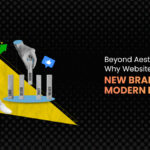Before diving into the specifics of building your personal brand on LinkedIn, it’s crucial to understand why a personal brand matters. A personal brand is more than just a digital resume; it’s a representation of your professional identity, expertise, and values. It distinguishes you from others in your field and helps you connect with like-minded professionals, potential clients, and employers. A strong personal brand can open doors to new opportunities, foster trust, and establish you as a thought leader in your industry.
A personal brand isn’t static; it’s a living, evolving reflection of your career journey. It encompasses your experiences, skills, and unique insights that you bring to your profession. This brand becomes a magnet, attracting opportunities and people who resonate with your professional persona.
In today’s interconnected world, where competition is fierce, having a distinguishable personal brand can be the deciding factor in career advancements and business growth. It signals to others that you are not just another professional in your field but someone with a distinctive perspective and valuable contributions.
1. Crafting a Compelling LinkedIn Profile
Your LinkedIn profile is the foundation of your personal brand. It serves as your online business card and the first impression you make on visitors. Here are the essential elements of a compelling LinkedIn profile:
a. Professional Photo
A high-quality, professional headshot is non-negotiable. Your photo should be current, clear, and convey professionalism. Avoid casual or overly staged pictures. Think of your profile photo as your digital handshake; it should be welcoming and trustworthy. A professional photographer can help you capture a photo that showcases your confidence and approachability. Ensure your attire aligns with your industry standards, and use a simple, clutter-free background to keep the focus on you.
b. Headline and Summary
Your headline should succinctly convey who you are and what you do. Instead of merely stating your job title, consider including your unique value proposition.
For example, “Digital Marketing Strategist | Helping Brands Achieve Growth Through Innovative Campaigns.”
The summary section is your opportunity to tell your story. Highlight your career achievements, skills, and passions. Be authentic and let your personality shine through. Remember, this is your chance to connect on a human level. Use this space to explain what drives you, what you’ve accomplished, and what you aspire to achieve. Use a narrative style to make it engaging and memorable.
c. Experience and Achievements
Detail your professional experience, focusing on key accomplishments and the impact you made in each role. Use quantifiable metrics where possible to demonstrate your contributions. Rather than listing job responsibilities, highlight specific projects and the results you achieved. For instance, “Increased sales by 30% through a targeted marketing campaign” is more impactful than “Managed marketing campaigns.”
d. Skills and Endorsements
List relevant skills that align with your career goals. Encourage colleagues and connections to endorse your skills to enhance your credibility. LinkedIn allows you to feature your top skills, so make sure these are the ones most relevant to your current professional objectives. Endorsements from others add a layer of validation to your claimed expertise.
e. Recommendations
Request recommendations from colleagues, clients, and mentors. Positive testimonials provide social proof and reinforce your expertise and work ethic. When asking for recommendations, be specific about what you’d like the person to highlight. A well-crafted recommendation can be a powerful testament to your abilities and character.
2. Consistent and Strategic Content Creation
Content is king on LinkedIn. Regularly sharing valuable and insightful content establishes you as a thought leader and keeps you top-of-mind with your network. Here’s how to create and manage your content effectively:
a. Identify Your Niche
Identify the topics that align with your expertise and resonate with your target audience. Focus on a niche area where you can provide unique insights and add value. This specialization helps you stand out in a crowded space. It’s essential to choose a niche that you are passionate about and have deep knowledge in, as this will sustain your content creation efforts over the long term.
b. Types of Content
Mix up your content formats to keep your audience engaged. Consider sharing:
– Articles: In-depth pieces that showcase your knowledge and analysis. Articles allow you to explore topics comprehensively, providing substantial value to your readers.
– Posts: Short, engaging updates about industry news, personal insights, or quick tips. Posts can be more informal and are excellent for sparking discussions and interactions.
– Videos: Engaging video content that can include tutorials, interviews, or behind-the-scenes looks. Videos can capture attention quickly and are a great way to convey your personality.
– Infographics: Visually appealing graphics that simplify complex information. Infographics are highly shareable and can make complex data more digestible.
c. Content Calendar
Consistency is key. Develop a content calendar to plan your posts and ensure a steady stream of updates. This helps in maintaining engagement and building anticipation among your followers. A content calendar also allows you to balance different types of content and ensure you cover all aspects of your niche comprehensively.
3. Leveraging LinkedIn Management Services
Managing a personal brand on LinkedIn can be time-consuming and requires strategic planning. This is where LinkedIn management services come into play. These services, offered by professionals or agencies, can help you optimize your LinkedIn presence.
a. Profile Optimization
LinkedIn management services can help refine your profile to ensure it’s search engine optimized (SEO) and aligns with your personal brand strategy. They focus on crafting compelling headlines, summaries, and experience sections that attract the right audience. SEO techniques applied to your LinkedIn profile can help you appear in relevant searches, increasing your visibility to potential employers or clients.
b. Content Strategy
Professionals can assist in developing a content strategy that aligns with your goals and target audience. They can help you identify trending topics, create engaging content, and maintain a consistent posting schedule. A well-defined content strategy ensures that your content is purposeful and aligned with your branding goals. It also helps in measuring the effectiveness of your efforts through analytics.
c. Analytics and Reporting
LinkedIn management services often provide detailed analytics and reports to track your performance. Understanding which content resonates most with your audience allows you to refine your strategy for better results. These insights are invaluable for continuously improving your LinkedIn presence. Metrics like engagement rates, profile views, and follower growth can indicate how well your personal brand is performing and where adjustments are needed.
4. Engaging with a LinkedIn Growth Agency
For those serious about accelerating their LinkedIn presence, partnering with a LinkedIn growth agency can be a game-changer. These agencies specialize in driving growth and engagement on LinkedIn through various strategies.
a. Targeted Networking
A LinkedIn growth agency can help you identify and connect with key influencers, potential clients, and industry leaders. They employ advanced networking strategies to expand your reach and build meaningful connections. These agencies use data-driven approaches to identify individuals and organizations that align with your professional goals, ensuring that your networking efforts are efficient and effective.
b. Lead Generation
Growth agencies often specialize in lead generation. They can create and implement strategies to attract and convert high-quality leads, helping you achieve your business objectives. By leveraging targeted campaigns and personalized outreach, these agencies can connect you with prospects who are genuinely interested in your products or services.
c. Paid Advertising
Investing in LinkedIn ads can significantly boost your visibility. Growth agencies can design and manage ad campaigns that target specific demographics and achieve measurable results. Whether it’s sponsored content, text ads, or dynamic ads, a well-crafted advertising strategy can enhance your brand presence and drive engagement.
5. Utilizing LinkedIn Content Services
Creating high-quality content consistently can be challenging, especially for busy professionals. LinkedIn content services offer a solution by providing expert content creation tailored to your brand.
a. Custom Content Creation
Content services can produce custom articles, posts, and multimedia content that reflect your brand voice and resonate with your audience. They ensure your content is well-researched, engaging, and aligned with your goals. This allows you to maintain a professional and consistent online presence without the constant time investment required for content creation.
b. Content Curation
Besides creating original content, these services can curate relevant industry news and insights to share with your network. This keeps your profile active and positions you as a well-informed professional. Curated content demonstrates your awareness of industry trends and your ability to provide value by highlighting important information and resources.
c. SEO and Hashtag Strategy
Optimizing your content for search engines and using effective hashtags can increase your visibility on LinkedIn. Content services can help you develop an SEO and hashtag strategy to maximize your reach. Strategic use of keywords and hashtags can significantly enhance your content’s discoverability, bringing more eyes to your profile and posts.
6. Networking and Building Relationships
Building a strong personal brand on LinkedIn is not just about self-promotion; it’s about building relationships. Here’s how to effectively network on LinkedIn:
a. Connect Strategically
Instead of sending generic connection requests, personalize your messages. Explain why you want to connect and how you can mutually benefit from the relationship. Personalizing your connection requests shows that you are genuinely interested in building a relationship and not just expanding your network for numbers’ sake.
b. Participate in Groups
Join LinkedIn groups relevant to your industry or interests. Engage in discussions, share your insights, and connect with group members to expand your network. Active participation in groups can help you establish yourself as a knowledgeable and engaged member of your professional community.
c. Engage with Influencers
Identify influencers in your field and engage with their content. Comment on their posts, share their articles, and initiate conversations. Building relationships with influencers can enhance your credibility and visibility. Influencers often have large, engaged followings, and their endorsement or interaction with you can amplify your reach.
7. Staying Authentic and True to Yourself
Authenticity is a cornerstone of a strong personal brand. People are drawn to genuine and relatable individuals. Here’s how to maintain authenticity on LinkedIn:
a. Be Transparent
Share your successes and challenges. Being open about your journey, including the setbacks and lessons learned, makes you more relatable and trustworthy. Transparency fosters trust and shows that you are a real person with genuine experiences, not just a polished online persona.
b. Show Personality
While maintaining professionalism, let your personality shine through. Share your passions, interests, and values. This helps in building a deeper connection with your audience. Your personality is what makes you unique, and showcasing it can differentiate you from others in your field.
c. Consistency
Ensure consistency in your messaging, tone, and visuals across your LinkedIn profile and content. A cohesive brand identity reinforces your authenticity and professionalism. Consistency builds recognition and trust over time, as people come to expect and appreciate your unique perspective and style.
8. Continuous Learning and Improvement
Building a strong personal brand is an ongoing process. Stay committed to continuous learning and improvement:
a. Stay Updated
Keep abreast of industry trends, news, and best practices. Sharing timely and relevant content positions you as a knowledgeable professional. Regularly updating your knowledge base ensures that you remain relevant and can provide the most current insights and advice to your network.
b. Seek Feedback
Regularly seek feedback from your network and mentors. Constructive criticism can help you refine your strategy and improve your personal brand. Actively seeking feedback shows that you are open to growth and are committed to excellence. It can also provide new perspectives that you might have yet to consider.
Conclusion
Building a strong personal brand on LinkedIn requires strategic planning, consistent effort, and genuine engagement. By optimizing your profile, creating valuable content, leveraging LinkedIn management services, partnering with growth agencies, and maintaining authenticity, you can establish a powerful presence on LinkedIn. Remember, your personal brand is a reflection of who you are and what you stand for. Nurture it with care, and it will open doors to endless opportunities in your professional journey.



